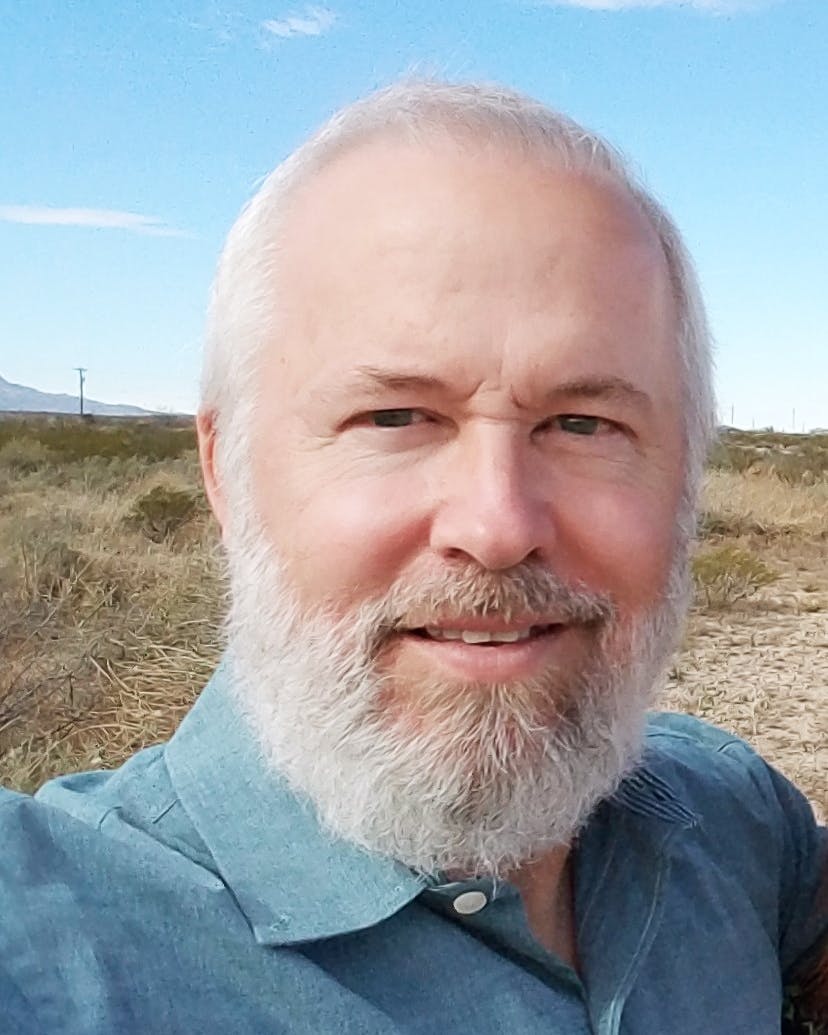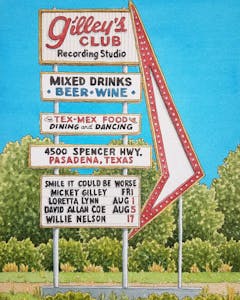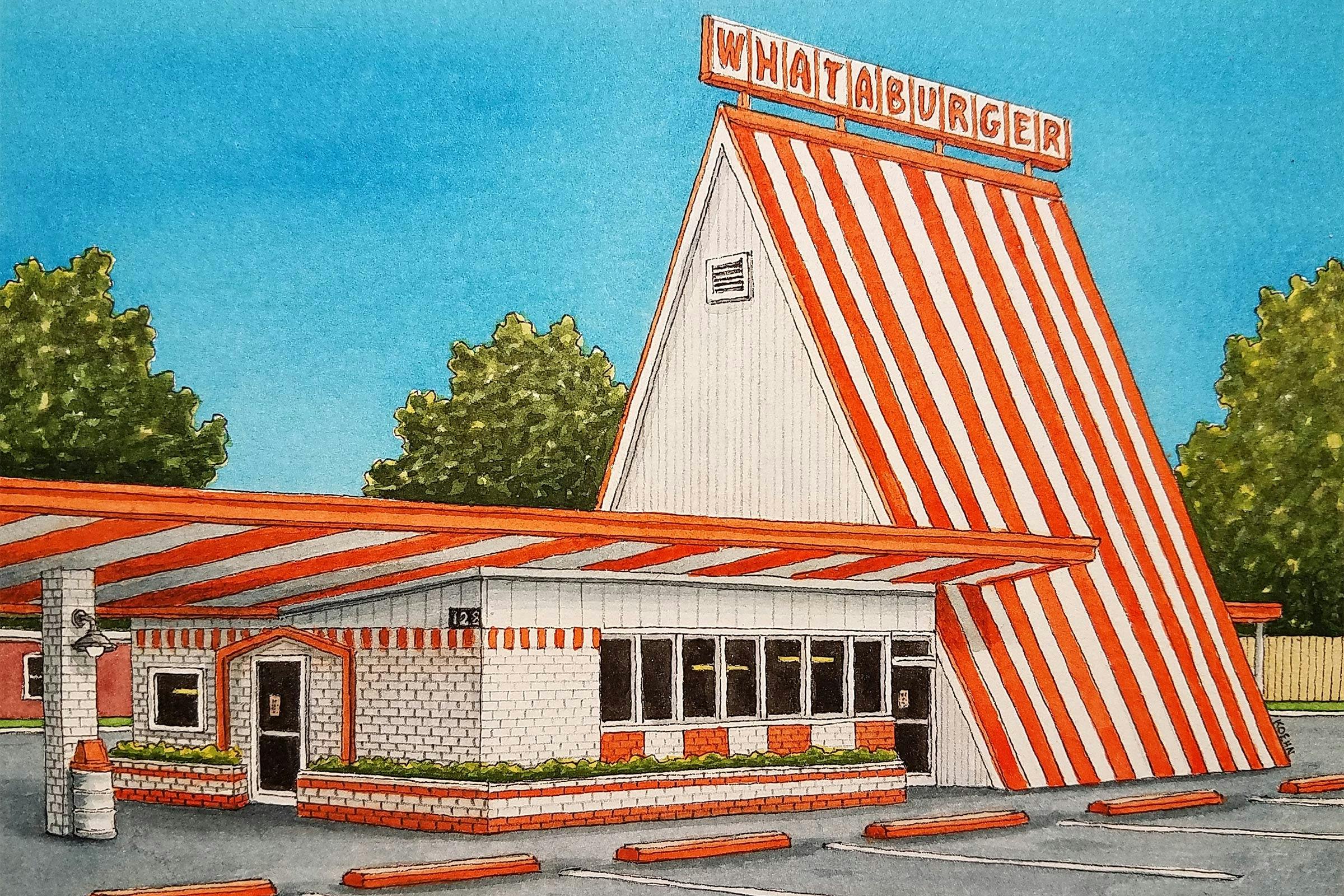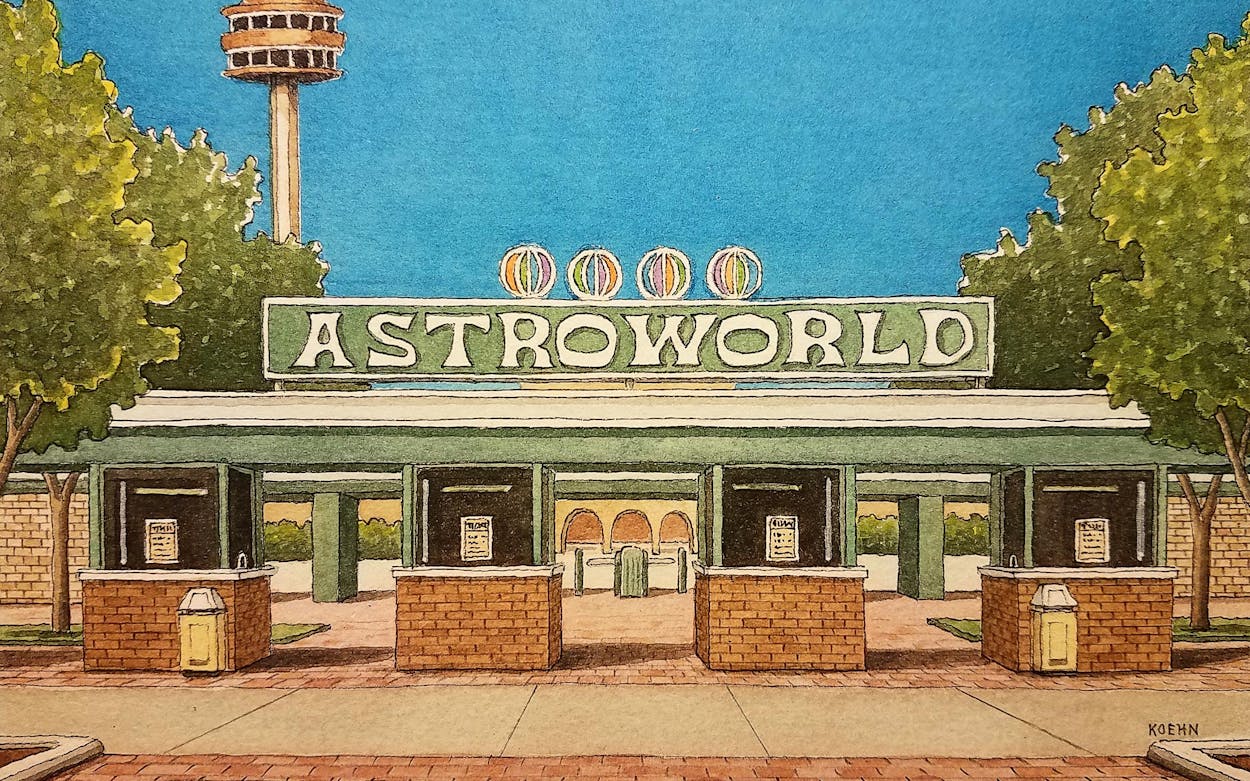Every July, Jim Koehn used to pack his silver Jeep Liberty with three duffle bags—one each for himself and his two daughters—along with hiking gear and a cooler with drinks and snacks. Koehn ran an events business in Houston, and in midsummer things died down, making it the perfect time for a great American road trip. He’d empty out a coffee can of cash that he’d carefully socked away over the course of the year, counting it to see how many days they could afford to spend on the road. With gas, meals, hotel rooms, and national park entry fees combined, the single dad spent about $200 a day driving across the United States. “I think our longest trip was 38 days,” he remembers. “My dad lives in Michigan, so [sometimes] we’d angle our way over there, then make our way out to the Badlands or Mount Rushmore or Yellowstone. Just a big humongous loop of the country.”
During picnic lunches or between hikes, Koehn often pulled out his sketchbook and pen to draw their surroundings. But he wasn’t as interested in the grand vistas of national parks as he was in buildings: think quirky old motels and bars to vacant fifties-era movie theaters. He’d pull over the car and photograph interesting structures to draw later. “We’d usually try to sneak in a concert in some small town, maybe a ball game, all the while taking pictures of the old movie theaters on Main Street,” Koehn remembers. Over the years, he visited a mind-boggling 950 old theaters, turning 150 of them into large watercolor and acrylic paintings: Clifton’s Cliftex, Galveston’s Martini, Lubbock’s Lindsey, and Marshall’s Paramount are among dozens of Texas theaters he illustrated.
Koehn had ambitions of turning the project, which lasted from 1989 to 2000, into a book. That never materialized, and after eleven years he tired of the series. “I realized I didn’t have a real strong attraction to the theaters, other than liking the architecture,” he says. “I didn’t have a story with ’em.”
What he did have a story with, Koehn found, was his adopted hometown of Houston. In 1981, at age nineteen, he’d road-tripped there with a friend from his native Michigan. The friend went home after two weeks; Koehn never left. “I was in the big city, and I loved it!” he exclaims, his voice picking up speed and volume as he lists his favorite neighborhoods. “Montrose, the Heights, the East Side, the Ship Channel, I was buzzing all over the place.” He got a job at Channel 8, the public TV station on the East Side, and spent his lunch breaks sketching buildings that caught his eye on Canal Street, Navigation Boulevard, and Telephone Road.

Over the last five years, though, Koehn has fully dedicated himself to painting what he calls “the backroads of Texas.” In finely detailed watercolor paintings that are almost photorealistic, yet also dreamy and nostalgic, Koehn revives old watering holes, restaurants, music venues, and other mom-and-pop spots—mostly in his beloved Houston. This series, which includes about 150 watercolor prints so far, has sold well enough that it’s allowed Koehn (who sold his events business in 2015) to finally focus on his art full-time at age 59.
While many other artists have taken a hit during the pandemic, sales in his Etsy shop have doubled since March. “Business has been booming, to be honest with you,” he says. “I’m going to the post office every two days, mailing out prints around the country.” He’s been growing the shop for a few years now, but he’s still not exactly sure what’s behind the sudden spike. Maybe buyers are redecorating while spending more time at home, or perhaps they’re seeking art that sparks warm memories during a stressful time. But it seems his paintings have found a niche among homesick Texans, with many customers living in New York or California. One reviewer wrote, “I recently relocated from Texas to Washington and I miss home dearly. I can’t express how much joy [this print] brings me.”

Some of Koehn’s watercolors serve as history lessons of vanished venues. He recently painted the Axiom, a club in East Downtown that only existed from 1987 to 1991. A hub for the city’s punk, metal, and underground scenes, the Axiom was a former hourly motel that even served as a residence for some musicians. Koehn included a little trivia he’d gathered online, listing Mother Love Bone, Fugazi, Deadhorse, and Nirvana as some of the bands that performed there, along with the image on Instagram. “I knew that’d be a niche painting, but the few people who do remember it, man, it just lights ’em up,” he laughs. This week, a Heights dive bar that Koehn recently painted, Alice’s Tall Texan, announced it will close permanently.
Other subjects are more well-known, like Screwed Up Records & Tapes, House of Pies, Fitzgerald’s, Walter’s on Washington, and Gruene Hall. His painting of AstroWorld, the Houston amusement park that closed in 2005, is a perennial top seller. “I hear three stories about AstroWorld,” he says. “‘My parents dropped me off there for the summer,’ ‘We dropped our kids off for the summer,’ or ‘I had my first job there.’” Since the release of Travis Scott’s 2018 album Astroworld, a younger crowd has been buying the prints too, he says—with at least one of them asking, “Is that a real place?”
Koehn usually works from reference photos, though if a place is still standing, he’ll often drive there and see it firsthand. Every day is a sunny day in this nostalgic version of Texas history, as he sets each building under a cloudless, bright-blue sky. For music venues with a marquee sign, he enjoys adding a dream lineup—when he painted Gilley’s, a studio and concert hall in Pasadena made famous by the film Urban Cowboy, he put Loretta Lynn and Willie Nelson on the bill. Koehn outlines the details of each painting with a very fine black pen before adding paint, giving his work a precision that’s rare with watercolors. He spends about fifteen hours on each five-by-seven-inch piece and uses a single fine paintbrush for every painting—which might present a problem, since “pretty soon all the hairs are going to fall out of that thing.” The name on the handle has long since worn away.

He takes commissions, including painting an Uncle Julio’s restaurant where one customer had her first date with her husband, or a chapel in La Grange where another couple got married. But his favorite pieces depict places that carry meaning for him. One is the Palace Lanes, a bowling alley near Bellaire that’s been replaced by a mixed-use apartment complex. “In 2015, my girls were off to college and I was like, I need to get out and do something,” Koehn says. “So I joined a bowling league, and that’s where I met my wife.” They married the next year.
Before the pandemic, the pair spent their free time driving around Texas, with Big Bend National Park, Alpine, and Terlingua among their favorite destinations. Now they’re mostly hunkered down at home in Katy, where Koehn listens to music—Stevie Ray Vaughan and Patti Smith are in heavy rotation—while he paints in the living room. He still ventures out to find new places to paint, though; on the day we spoke, Koehn was getting ready to take a reference photo of the Waugh Drive bridge, home to 200,000 Mexican free-tailed bats.
Reflecting on his recent success, he sounds a little surprised. “You always think you’re going to hit it big when you’re in your twenties,” he says. “Art has always been my calling, but I feel really fortunate that these little paintings have resonated. I didn’t do it because I thought they would sell—I did it because I like it. I’m having fun with it, and I guess I’m preserving a little bit of Houston history along the way.”








